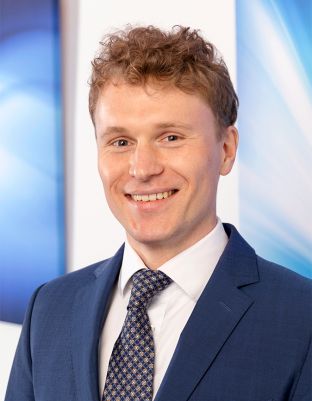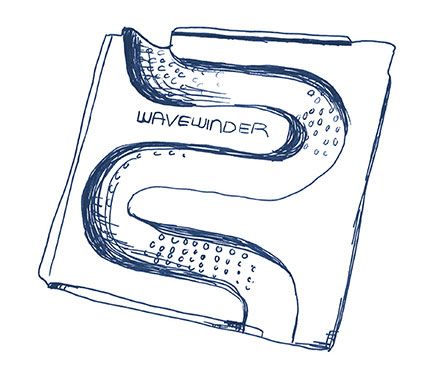
In season 9, episode 11, of the TV show "Die Höhle der Löwen" (German version of the US show Shark Tank and the UK show Dragon's Den), a self-employed hairdresser presents a product for perms called "Wavewinder": a plastic molding that is supposed to replace conventional curlers and curling irons.
A patent has been granted for the Wavewinder. This can be seen as an example of a patent with a relatively limited scope of protection. In the case of imitations (so-called fakes), a narrow scope of protection can make legal prosecution more difficult.
In the following, we will explain why the scope of protection was limited in the examination proceedings and what options would have been available when drafting the patent application in order to achieve a broader scope of protection, if necessary. The value of a patent is essentially determined by its scope of protection, which is defined by the claims.
The product: The Wavewinder. What is it about?
The Wavewinder consists of a basic molded part into which hair can be placed in a snake shape. A complementary molded part creates the necessary pressure to hold the hair in the snake shape. Additional moldings can be attached to the end faces for different hair lengths.
The patent application (Ref.: 10 2014 101 217.8)
Originally, an attempt was made to protect the Wavewinder as a hair shaping device in a patent application. Claim 1, which basically determines the scope of protection for the product, defines (see Figs. 1 and 3 below; the numbers in parentheses are for illustration):
A hair shaping device (1) comprising a lower plate (2, 21) and an upper plate (3, 31), the upper plate (3, 31) and the lower plate (2, 21) being configured such that the upper plate (3, 31) and the lower plate (2, 21) form a shaping gap (4, 41) therebetween, which is configured to form hairs located therein, characterized in that the shaping gap (4, 41) is configured in a double corrugated manner such that the shaping gap (4, 41) extends along two corrugations (5, 6) which overlap and are offset by 90° relative to each other.
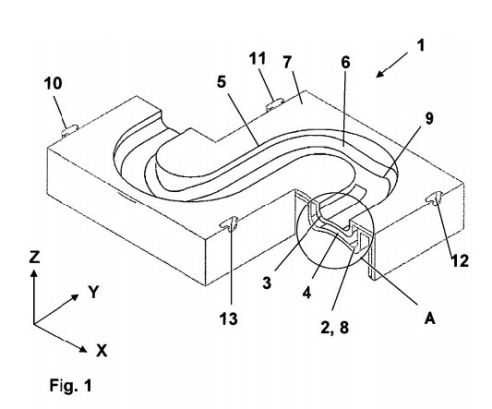
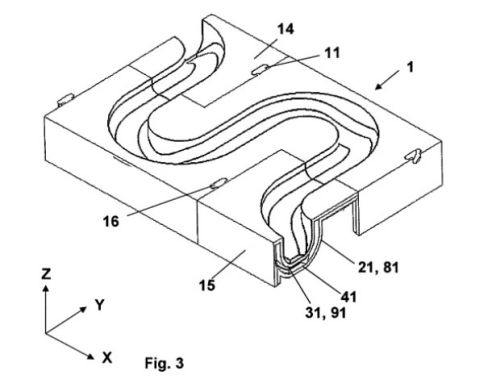
The figures from D1 above show a hair styling device that must be actively moved in order to shape the hair accordingly. The Wavewinder, on the other hand, is passive.
Info: In patent applications, the products as a whole are not compared with each other, but the wording of the claims (the word composition of all words in a claim) is compared with the prior art (here: D1).
D1 includes a hair styling device of the following type:
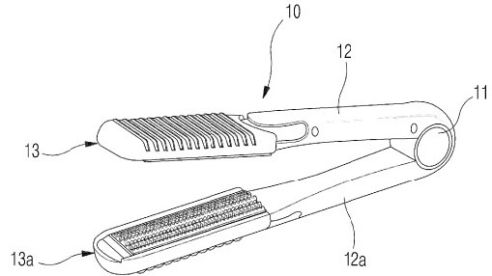
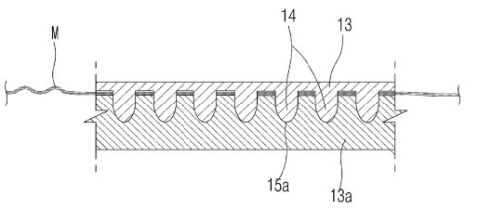
As can be seen above, D1 also discloses a hair shaping device (10) having a lower plate (13a) and an upper plate (13) forming a shaping gap (M) therebetween which is double corrugated so that the shaping gap (M) extends along two superimposed corrugations (14, 15a) offset 90° from each other.
Thus, claim 1 is not novel over D1. However, conclusions can be drawn from the figures in D1 as to how a claim could be formulated to distinguish itself from D1 at least in terms of novelty.
During the examination proceedings, the applicant decided to limit claim 1 by inserting features from the combination of original claims 10 and 12. These state:
"in that the hair shaping device [...] is of modular design and [...] has a central piece which is configured for connection to further parts of the hair shaping device, and
that at least one end piece is attached to the front/rear end of the center piece, wherein the center piece is connected to the end piece via a tongue-and-groove connection."
This highlights the modular assembly of the Wavewinder. Since D1 does not concern assembled molding parts, the reformulated wording of claim 1 defines a hair shaping device that is different from the hair styling device of D1.
In the examination proceedings, further prior art was cited, the relevance of which is of a subordinate nature. Quite generally, the prior art is based on providing hair shaping devices to be pulled longitudinally along the extension of the hair. In contrast, amended claim 1 defines a modular shape of a hair shaping device with a corresponding end piece, whereby the hair can be inserted into the hair forming device along its length.
Based on the amended claim 1, a patent (DE 10 2014 101 217 B4) was subsequently granted.
Suggestions for better scope of protection
As explained in the introduction, claim 1 is decisive for determining the scope of protection. In the examination proceedings, the wording of the claims cannot be changed arbitrarily. Rather, the applicant is bound by what is originally disclosed in the application documents. In proceedings before the European Patent Office, the principle applies that, if possible, literal text passages should be used to distinguish the invention from the prior art. Features which are schematically shown in the figures of the application documents but not described in the application text cannot, in case of doubt, be used as a disclosure basis for a specific wording amendment of the claims.
Info: An infringement, i.e., a product that realizes the features of claim 1 defined above, by a competitor on the market only exists if the center piece (7) and the end piece (14, 15) are connected, namely via a tongue-and-groove connection. If the center piece and end pieces are sold loose, such a sale does not fall within the scope of claim 1, at least not literally. A direct infringement would then not exist. Indirect infringement would be possible, however.
The decisive factor in the prosecution of patent applications is the underlying strategy. Thus, the focus must be on drafting and preparing the documents to obtain the best possible protection for the invention. This includes writing the patent application before filing it and amending the claims during the examination proceedings.
Info: The application text should contain as many forward-thinking delineation features as possible, which can later be used in the proceedings as delineation from the prior art.
Examples of delineation features of the Wavewinder would be:
• Inactive (passive) hair shaping device;
• Increased wave arc radius (>1cm);
• Single component – segments;
• Connecting elements – array;
• larger width of the mold gap (>1cm);
• made in 3D printing; or
• manufactured in one piece.
Compared to the cited prior art, these example features would in principle be suitable to result in a less limited scope of protection than the features of claims 10 and 12 ultimately included in claim 1.
Conclusion
The success of a patent application lies in the design of protection if potential future imitators are to be legally prosecuted. When drafting the patent application, the scope of protection must be defined as broadly as possible by formulating a broad main claim and then suitably limited (keyword: foreseeable) in the examination proceedings depending on the prior art. In the case of the Wavewinder, the scope of protection was limited to the modular structure. By including other features essential to the invention when writing the application, such as the passive character of the device or the enlarged wave arc radius, it might have been possible to achieve a broader scope of protection during the examination proceedings. Therefore, the intensive dialogue of an experienced patent attorney with the inventor is indispensable for drafting and preparing promising application documents to understand possible delineation features and simple circumvention solutions in advance.
Author: Julian Graf
German and European Patent Attorney
Disclaimer: The above contribution reflects the personal opinion of the author. The assessments and statements made in the article do not constitute legal advice and are provided under exclusion of any liability. If you need an assessment of an individual case, please contact the author and/or the law firm KUHNEN & WACKER.


